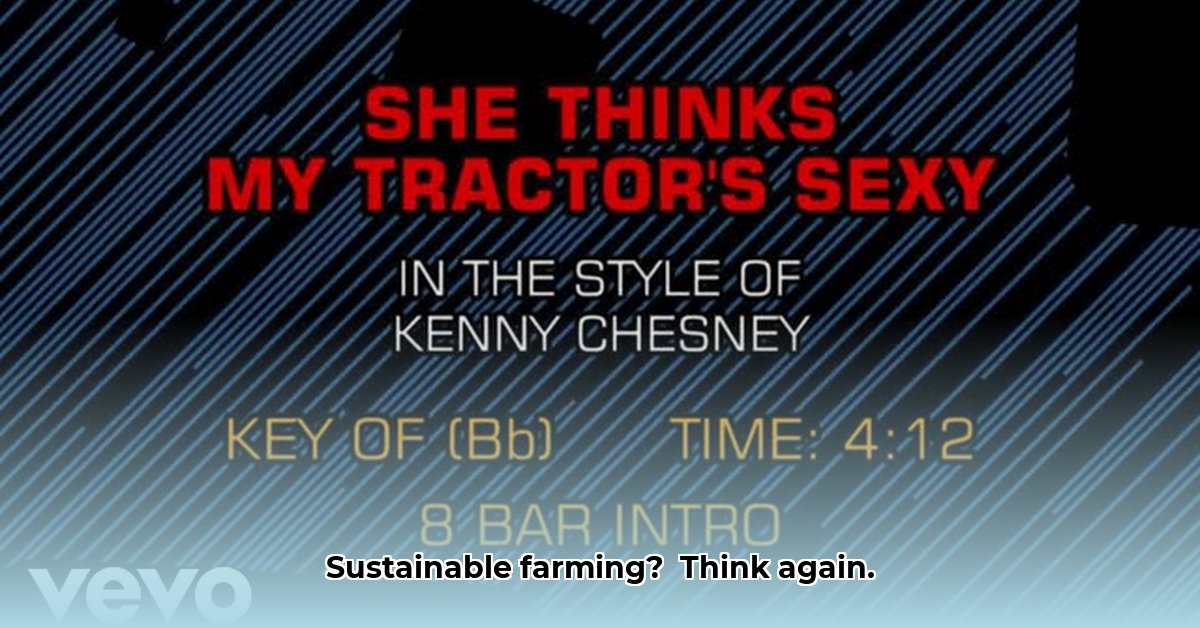
A Modern Twist on a Country Classic
Kenny Chesney's "She Thinks My Tractor's Sexy" is more than a catchy tune; it's a reflection of the evolving landscape of modern farming. The song's seemingly simple premise—a woman's attraction to a farmer and his machinery—conceals a deeper narrative about technology's transformative role in agriculture. It prompts us to consider societal perceptions of farming and its future trajectory. But does this romanticized portrayal accurately capture the complexities of sustainable food production? Does it fully represent the challenges and rewards of a career in agriculture? For more on the song, check out this site.
Beyond the Lyrics: The Real Deal on Farming Life
The song's charm stems from its idealized depiction of the farming lifestyle. It presents a rugged, independent farmer deeply connected to the land. His gleaming tractor, bathed in sunlight, symbolizes both his livelihood and his inherent appeal. However, the reality is far more nuanced. Farming demands long hours, resilience in the face of unpredictable weather patterns, and the constant uncertainty of fluctuating market prices. This multifaceted reality is not always evident in Chesney's lyrical depiction. So, how can we reconcile this idealized image with the authentic day-to-day experiences of farmers? And crucially, how can we inspire a new generation to embrace this vital profession? A key question is: How can we effectively bridge the gap between perception and reality to attract young people to farming?
Tech's Role: The "Sexy" Factor, Redefined
The tractor in the song transcends its function as mere farm equipment; it symbolizes technological progress. Modern agriculture relies heavily on precision farming techniques. GPS-guided machinery, sophisticated data analysis, and increasing automation are revolutionizing the industry, fostering both efficiency and environmental sustainability. This is where the "sexy" element truly shines: it's the thrilling intersection of technology and nature, a blend of innovation, problem-solving, and environmental stewardship. This contrasts sharply with the outdated image of solely back-breaking manual labor. The fact is, precision agriculture techniques can increase yields by as much as 20%, proving the value of technological investment.
The Farmer Recruitment Challenge: Attracting a New Generation
The disconnect between the perceived and actual realities of farming presents a significant challenge: attracting a new generation of farmers. How can we make this career path more enticing? We need to highlight the exciting integration of technology. Marketing campaigns should showcase the high-tech tools and innovative solutions that define modern farming. This isn't about tilling the soil alone; it's about leveraging cutting-edge technology to sustainably feed a growing global population. It's about using technology to help build a better future for the planet. Isn't this a compelling narrative we can use to appeal to young talent?
Strategies for a Thriving Farming Future: A Collaborative Approach
Bridging the gap between perception and reality, and consequently attracting new farmers, requires a collaborative approach. This involves a multi-pronged strategy encompassing several key stakeholders.
1. Increased Investment in Training and Education: Integrating precision agriculture into school curricula and offering hands-on workshops will equip future generations with the necessary skills. Long-term investment in specialized training programs focusing on data analysis and sustainable farming practices is critical.
2. Innovative Financial Support Systems: Government subsidies, flexible loan options, and tax incentives can mitigate the high initial costs of adopting new technologies. Expanding access to creative financing models, such as leasing programs, can make advanced equipment more accessible to small and medium-sized farms. This requires a significant commitment from government bodies and the private sector.
3. Promoting Collaboration and Data Sharing: Encouraging data sharing among farmers, through cooperatives or online platforms, can reduce the individual cost burden while amplifying the collective benefits of precision agriculture. This promotes learning and efficiency.
These interconnected strategies will form the foundation for a thriving and sustainable agricultural future. The future of our food system depends on it. The more we understand and address the challenges, the better equipped we will be to build a sustainable and prosperous agricultural sector.